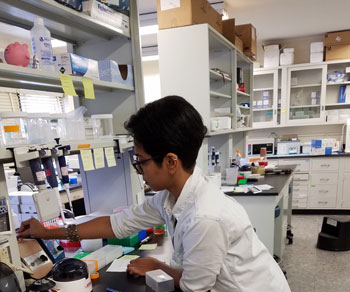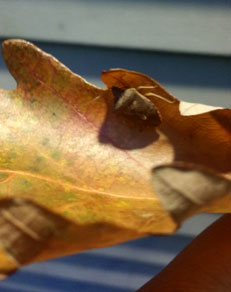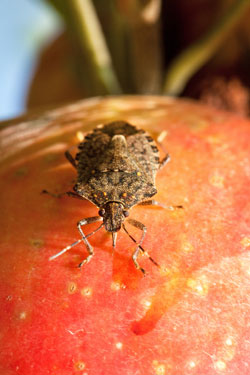For my Buell Scholarship, under the guidance of Rafael Valentin, a Ph.D. candidate in Julie Lockwood's lab, I am studying the invasion dynamics of the non-native pests, using the brown marmorated stink bug (Halyomorpha halys) as my study organism.
Originally from East Asia, the brown marmorated stink bug (BMSB) is an invasive agricultural threat. It was first spotted in Allentown, PA in the late 1990's, and it has since spread across the Eastern United States. The stinkbug destroys many crops by corking, feeding on the produce by destroying the tissue underneath the surface, rendering the crop unsaleable. [1] In the winter, BMSB is also considered a nuisance pest when it aggregates in manmade structures. The stink bugs not only produce an unpleasant smell when disturbed, but can also contaminate food and defecate on walls, forming streaks.
My project is focusing on the overwintering habits [behavior] of the stink bugs. I am interested in how BMSB spatially organize themselves in a structure throughout the season, and intend to use a genetic approach to address this question. Every living organism deposits or sheds biological material that contains DNA; this is known as environmental DNA (eDNA), and my goal will be to collect eDNA from BMSB at different levels to ascertain which level has a higher prevalence of BMSB detected. I am also interested in the effects of climate change on the invasion of BMSB. In particular, how climate change can influence habitat suitability for the brown marmorated stink bug. Moreover, I'm trying to understand how rising temperatures affect population size/abundance of this invasive agricultural pest.


[1] Leskey, T.C., Short, B.D., Butler, B.R., Wright, S.E. 2012. Impact of the invasive brown marmorated stink bug, Halyomorpha halys (Stål), in mid-Atlantic tree fruit orchards in the United States: case studies of commercial management. Psyche. DOI




